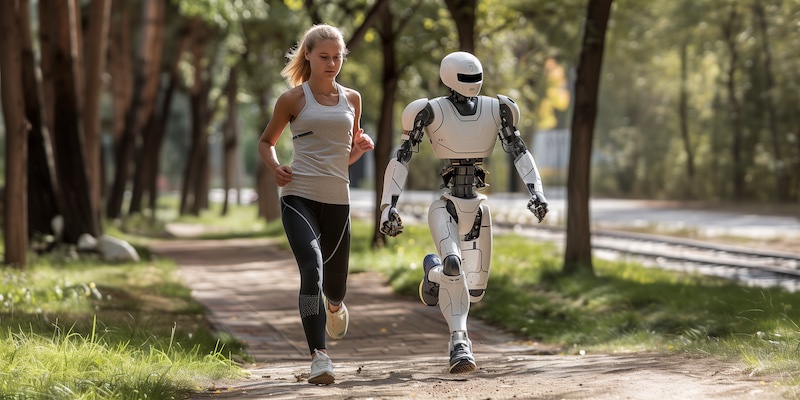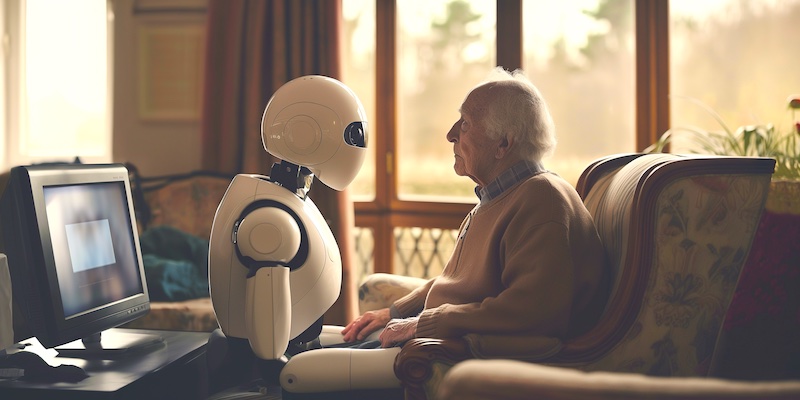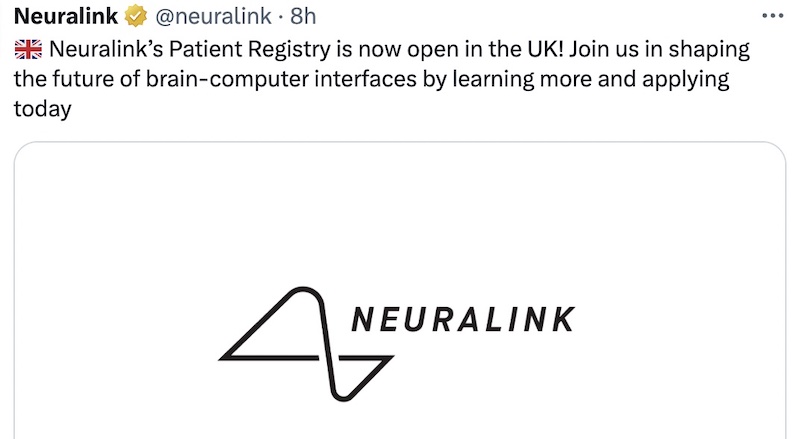S5. Self-driving cars, humanoid robots, drones and AI assistive technology
skip to Session 6 - AI Ethics
Session 5 - Outline for Students
A. Self-driving Cars arrive
Self-driving cars are the most visible example of a mechanical device being given intelligence by AI. This session examines just how close they are and then shows how the same underlying logic extends to humanoid robots and flying drones. Finally it looks at AI Assistive Technology.
A1. Video in, action out (Tesla example). Also known as "Photons in, controls out". For many years it seemed that achieving Full Self Driving (FSD) was far more difficult than had been hoped. Traditional programming techniques just could not deal with all of the millions of 'edge cases' - that is, the rare situations that were different to just proceeding down a well lit road with clear lane markings. Then, everything changed. Elon Musk and others realised that they could train a neural net for the task. Tesla already had hundreds of million hours of videos from existing Tesla cars on the road. Of course, that took immense computing power but the result was that thousands of lines of 'old style' code could be discarded.
The first view of the Tesla Robotaxi on 10th October 2024. Tesla's "We, Robot" event showed 19 Cybercabs and 29 Model Ys driving themselves on 1,300 trips transporting over 2,000 guests
Rides in the city of the future https://t.co/swCCGwLP1X pic.twitter.com/mu5IfQD6AN
— Tesla (@Tesla) October 17, 2024
Long journey using Full Self Driving in Dec 2024.
Here's Tesla FSD 13.2 driving for an hour and 40 minutes through LA traffic with zero interventions.
— Whole Mars Catalog (@WholeMarsBlog) December 8, 2024
I know watching a video of my car sitting in traffic may not be very exciting, but imagine what a life changer this is for people who do this commute every day. pic.twitter.com/rVl8qDOzYe
Simple Full Self Driving use January 2025
Once you use Tesla Autopilot/FSD for commuting, you won't use any other car. Thank you @Tesla @elonmusk pic.twitter.com/aHb8aOHO8N
— Eva McMillan ♥️ (@EvasTeslaSPlaid) January 10, 2025
Tesla cars driving themselves from the production line to the delivery park Jan 2025
Teslas now drive themselves from their birthplace at the factory to their designated loading dock lanes without human intervention
— Tesla AI (@Tesla_AI) January 29, 2025
One step closer to large-scale unsupervised FSD pic.twitter.com/Aj6dHsLaRO
The safety benefit of self-driving cars 2025.
Your quarterly reminder that you should be letting your Tesla drive. And if you don't have a Tesla you should get one and let it drive. pic.twitter.com/3W1Rtuw05q
— jimmah (@jamesdouma) January 30, 2025
This has also given a major headache to many Tesla competitors who do not possess hundreds of millions of hours of driving video to use for AI learning. How then can they train their own systems? Elon Musk has suggested that many are in the early stages of licensing the technology from Tesla.
B. There will soon be many millions of Humanoid Robots
The development of humanoid robots has happened very slowly over many years. Suddenly however they are about to appear in many areas of our lives in quite a shocking fashion. The reason is of course the power of AI which has allowed robots to learn how to relate to the world in a way that was never previously possible.
Whatever the other consequences, humanoid robots are going to bring a lot of entertainment.
Humanoid robot technology is progressing fast. By the end of this year, we should make more progress than in the last 10 yearspic.twitter.com/h2S0yTL0jg
— Dr Singularity (@Dr_Singularity) February 14, 2025
Elon Musk spoke about his plans for the Tesla Optimus robot in Jan 2025.
Elon Musk: "We plan to ramp Optimus production faster than anything has ever been ramped. An order of magnitude per year; That's the kind of growth we are talking about; It won't be long before we are making 100 million of these things per year."
— Sawyer Merritt (@SawyerMerritt) January 29, 2025
A Tesla Optimus training on rough ground.
luckily i downloaded it@M_IsForMachine 👀 pic.twitter.com/O4ctDu4OIv
— Jacob (@TPaintjob) December 9, 2024
B1. Humanoid robots learn quickly. Things moved quickly in 2024. Dexterity that used to be achieved only after years of careful engineering now appears almost as a side benefit of training. So it becomes only a matter of time until humanoid robots appear in our midst.
The following clip is of an Optimus being tele-operated and shows that Optimus will be able to participate in a wide range of activities. It has been suggested that remote tele-operation of humanoid robots will continue to be useful long after the internal AI can perform tasks without asistance.
Got a new hand for Black Friday pic.twitter.com/x3gQrsbYAQ
— Tesla Optimus (@Tesla_Optimus) November 28, 2024
B2. The initial uses. We know that the initial applications will be the 'low hanging fruit' in business. For example:
- warehouse and shop workers carrying boxes and unloading and loading vehicles
This is AI created, yet it will soon be seen on every street.
Imagine seeing the $TSLA BOT at the mall like this 😯 pic.twitter.com/ji5tKR5126
— Pejjy (@CuriousPejjy) November 26, 2024
Applications will also include:
- production line work bringing parts to the line and more
- shop workers restocking shelves and giving excellent customer service
- car to home delivery once self driving vans are commonplace
China is determined to be a leader in this market. Chinese New Year in Jan 2025 saw many demonstrations.
In a gala hosted by CCTV to celebrate Chinese New Year, robots were seen performing traditional dance. What do you think of their dancing skills? pic.twitter.com/8WirzlWhQ2
— Ray (@ray4tesla) January 28, 2025
Business and industrial applications will provide the volumes, and that in turn will ensure fast cost reduction. As might be expected, this is a very competitive market. Recent price prediction for robots for personal use are in the £ 10,000 to £20,000 range, comparable to a small car. Another interesting prediction was that within 10 years there would be more Humanoid Robots than SmartPhones.
B3. Longer term applications.
Example: Robots as personal trainers. It will be a while until the ordinary home has a full power humanoid robot but we can examine one area where they become directly useful to ordinary citizens. In the UK a personal trainer might cost, say, £ 20 per hour. Please don't complain if you live in a higher cost area, this figure will do for our purposes.

Imagine then that a local company hires a 'personal trainer robot' and then rents it out to clients who wish company and security when running, as well of course as a fully informed guide with knowledge of all your vital signs. That also has to be worth £ 20 per hour to many end users. Doing some basic mathematics, and assuming a modest capacity of 30 hours per week then the business can produce an income of £ 600 per week, or £ 30 000 per annum.
Suppliers of humanoid robots will almost certainly wish to rent them out to the business, complete with insurance and maintenance, rather than sell them outright. Potentially then even an annual rental cost of £ 20 000 might make everybody's calculation work. Given the competition levels, this is not a hard price to anticipate being reached very soon.
Example: Humanoid robots as carers. For a robot to provide assistance in a person's home, or in a care home, it needs to be able to move fluidly in the same complicated spaces that humans manage every day. That means that it is very likely to be a robot in humanoid form that provides the solution to this difficult problem.

Why robots rather than people? Clearly there will still be a need for people to work as carers whatever happens with humanoid robots. The best of the latter will have some advantages though.
- potentially available 24 hours a day, seven days a week
- able to monitor vital signs automatically
- with powerful 'consultant level' diagnostic skills
- strong enough to lift a patient on their own
- fully recorded actions by camera and sensors
As with all 'products' the quality of the humanoid robot will depend on budget available and cultural decisions. They should revolutionise care surprisingly soon though in more affluent countries.
B4. The many suppliers of humanoid robots.
This section is intended to show the wide range of companies who are competing to be major players in this space. It also demonstrates how far advanced the leading players are. It really won't be long until we see humanoids competing in the 'Robot Olympics'!
a. Optimus. This humanoid robot is from USA based Tesla (late 2024) tesla.com.
Optimus is coming earlier than many believe:
— Teslaconomics (@Teslaconomics) January 29, 2025
“Progress on Optimus hardware and software continued in Q4, including the latest generation hand, robots locomotion and training on additional tasks, ahead of planned pilot production in 2025.” pic.twitter.com/WcFjBviEEh
b. Figure robot now using OpenAI intelligence. Made by USA company Figure figure.ai. This video from Nov 2024 shows a humanoid robot being used in a pilot at a BMW factory.
Humanoid robots in production! 🦾🤖 Figure 02 robots are now 400% faster with 7x higher success after trials at Plant Spartanburg. Next stop: BMW Group Production. 🚀
— BMW Group (@BMWGroup) November 26, 2024
Discover more: https://t.co/OTUKyvIS41#BMWGroup #BMWiFACTORY #Innovation @Figure_robot pic.twitter.com/x0ZvT8oBU5
c. Digit. Made by USA based Agility Robotics agilityrobotics.com. This video from shows a pilot of their robot in an industrial setting.
Safety remains the most significant barrier to the mass adoption of humanoid robots.
— Agility Robotics (@agilityrobotics) January 27, 2025
Digit was the first to deploy in a commercial environment, and now we are paving the way to cooperative safety. #TheSafeRobot pic.twitter.com/AkpA93TYPu
d. Unitree H1. Chinese company Unitree unitree.com have an impressive offering. Chinese suppliers like this will quickly drive down the cost of humanoids.
Unitree G1 Bionic: Agile Upgrade 🥰
— Unitree (@UnitreeRobotics) January 16, 2025
Unitree rolls out frequent updates nearly every month. This time, we present to you the smoothest walking and humanoid running in the world. We hope you like it.#Unitree #AGI #EmbodiedAI #AI #Humanoid #Bipedal #WorldModel pic.twitter.com/uM0DWJG5Ii
e. 1X Eve and Neo. This Norwegian company 1X 1X.tech is aiming at both the industrial and home markets.
Introducing NEO Beta.
— 1X (@1x_tech) August 30, 2024
Designed for humans. Built for the home. pic.twitter.com/5S6jpRjUQp
There are of course many other suppliers than those listed.
C. Drones and Drone Swarms
C1. It is no longer easy to define a 'drone' as they are taking on many forms and are being combined with both centrally controlled AI and with their own intelligence. The most obvious are the drones that are used in entertainment, warfare and more mundane delivery and surveillance tasks. Here is a drone exercise in China with obvious dual use potential.
When I talk about coordinated drone swarms, this is what I mean pic.twitter.com/DZC2bkPVSP
— Adrian Dittmann (@AdrianDittmann) November 24, 2024
C2. Palantir CEO Alex Karp is at the forefront of using AI in conflict as well as in more peaceful situations (like the UK's NHS). Note the references to Ukraine and Israel. Apparently "human ethics can be encoded" which sounds reassuring ...
$PLTR AI and Ethics: The Future of Battlefield Intelligence with Palantir CEO Alex Karp on FOX News: pic.twitter.com/a4G5jNqftc
— Palantir Daily (@DailyPalantir) December 10, 2024
D. The Urgency of AI Assistive Technology
AI will soon also give unprecedented support to disadvantaged members of society. The quality of so many lives could be dramatically improved by AI technology.
There are separate pages for different aspects. This is an area we are actively researching, looking for ways to aid our local community.
Neuralink Blindsight
Neuralink is an Elon Musk company which has already performed an operation that gave a man with complete paralysis below the neck the ability to confidently control a computer with full functionality. Here is more of their direction.
We have received Breakthrough Device Designation from the FDA for Blindsight.
— Neuralink (@neuralink) September 17, 2024
Join us in our quest to bring back sight to those who have lost it. Apply to our Patient Registry and openings on our career page https://t.co/abBMTdv7Rh
Interesting news that Neuralink has opened a UK patient registry, so pass the news if you know anybody suffering from relevant issues (see below). Weblink here: neuralink.com/patient-registry/uk/ .
"Anyone within the UK who is at least 18 years old, who is able to consent, and who has quadriplegia, paraplegia, vision loss, hearing loss, the inability to speak, and/or major limb amputation (affecting above or below the elbow and/or above or below the knee), is invited to participate in the Patient Registry UK"

There are many devices that use AI to aid those with disabilities. For example, these glasses are from USA company Agiga echovision.agiga.ai and are said to be available mid 2025. This is a link to a very useful YouTube video about them EchoVision Glasses from Agiga.
#AGIGA #EchoVision - "Revolutionizing independence for the blind and low vision" https://t.co/719raYrJD4 #AI smart glasses pic.twitter.com/KSvDuIgMgX
— The vOICe vision BCI 😎🧠 (@seeingwithsound) December 3, 2024
See below for more links to information on Assistive Tech.
AI to aid those with Sight Issues
AI to aid those with Memory Issues